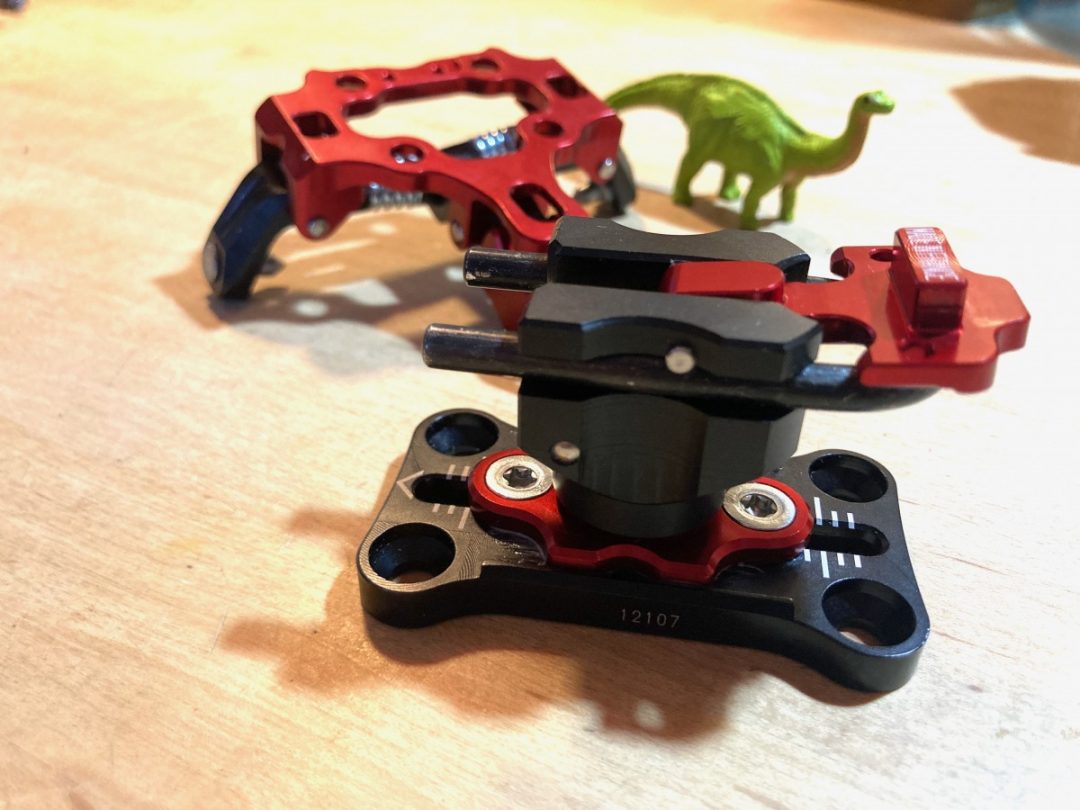
Light and fast and fast looking too: PLUM’s R170 race inspired binding weighs ~176g.
There’s no cheating when going uphill: Gravity is omnipresent. To lighten the ski kit, PLUM’s R170 at ~170g offers incredible lightness in a durable and reliable backcountry ski touring binding.
I maybe got a bit carried away in the first look at the R170 back in May. It was perhaps more than a first look. Anyhow, we’ve got options galore considering lightweight bindings. If red is your thing, and you like lightweight with a slight compromise on a full assortment of features, then the PLUM R170 may hit the mark.
In that first look, we chat about delta angle, the use of a U-spring rather than two independent heel pins (which is the norm on race bindings), the add-on ski crampon slot, the user-friendly toe lever, and blah blah blah. Basically, it was more than a first look. So for fear of repeating myself too much, feel free to give that piece a read if this is your first peek at PLUM’s R170 goodness.
Let’s start there. The binding is good and gooder. I’ve worked plenty of decaying Volcano matter — in the form of dust — into the heel and toe unit to comment on the durability. These are well-made bindings. The toe piece is at once solid feeling, with a reassuring click when locking in for descending or skinning, and light. Stomping into the heel requires some pressure and a mild stomp to engage the U-spring, but it is secure with no play. Those sensations remain with no play or evident mechanical breakdowns on the horizon. Anecdotally, I also hear from Cripple Creek BC that over the years, they have dealt with few durability issues with the newer PLUM R170 — it has held up. So far, I’m a believer. And for those concerned about U-spring durability in all this lightness, it is steel, not titanium.
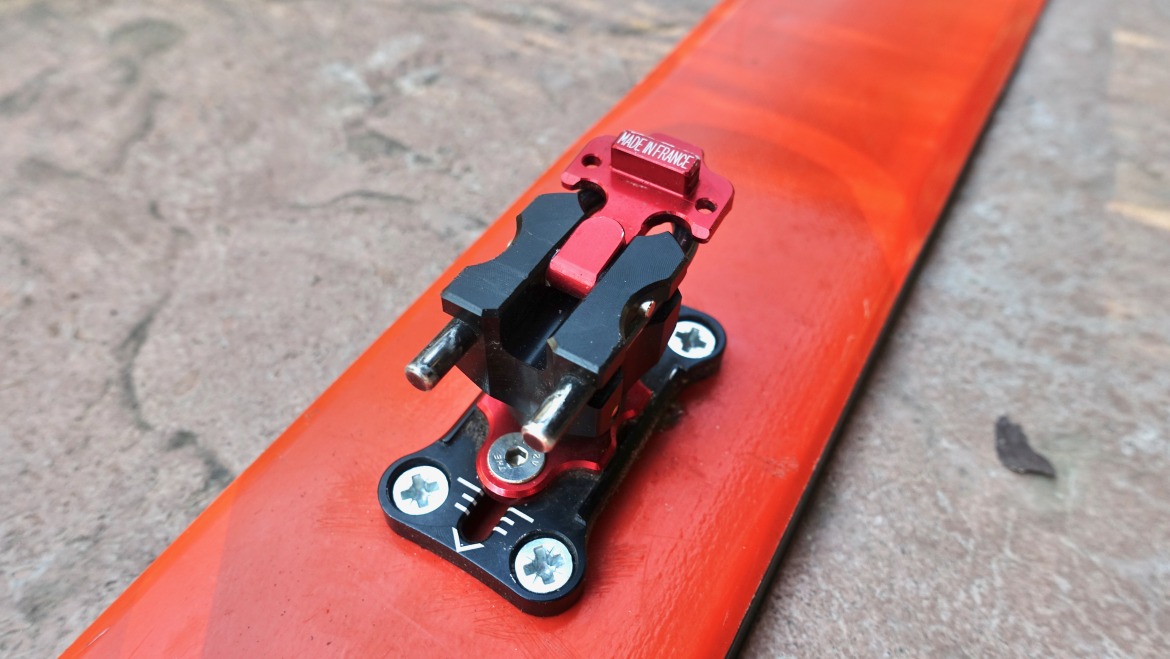
Pins forward, ready for engagement. Th R170 heel unit is a race style piece with a flat mode and +41mm riser option.
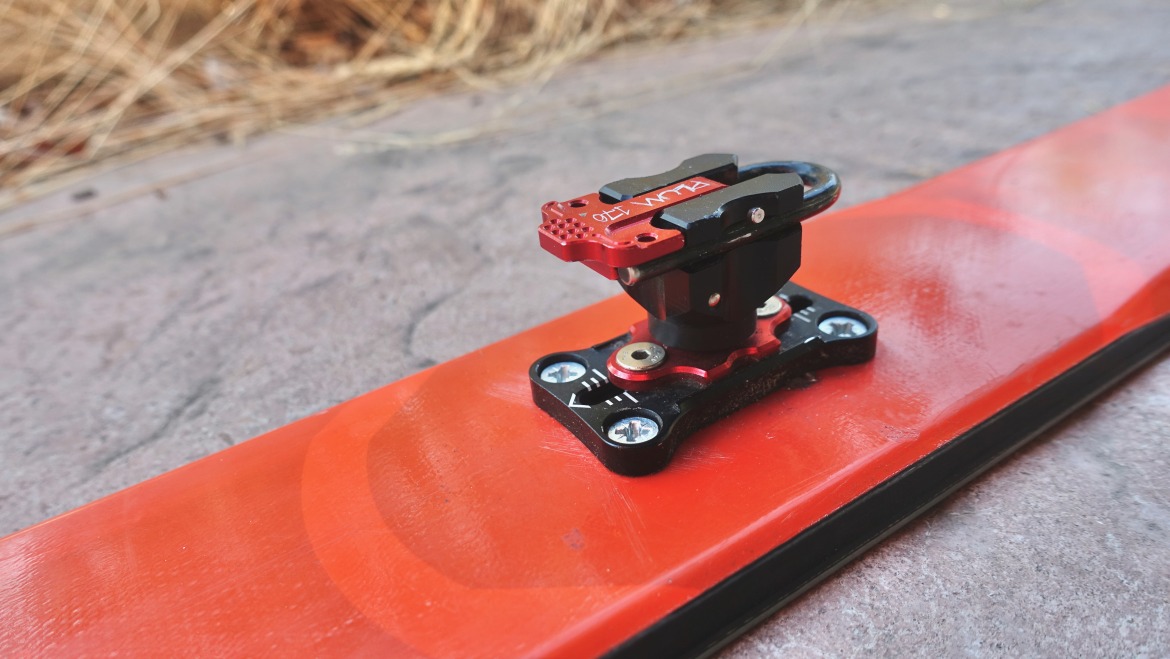
The R170 heel unit, pins forward, +41mm riser in place.
Weight: verified at 176g/binding
Lateral release value: fixed at 8
Vertical release value: fixed at 8
Construction: CNC machine construction (no molding)
Riser positions: 0 & +41mm
Adjustment plate: +/- 10mm of adjustability.
Delta angle: ~+4.3 degrees
Made in: France
Price: MSRP $475
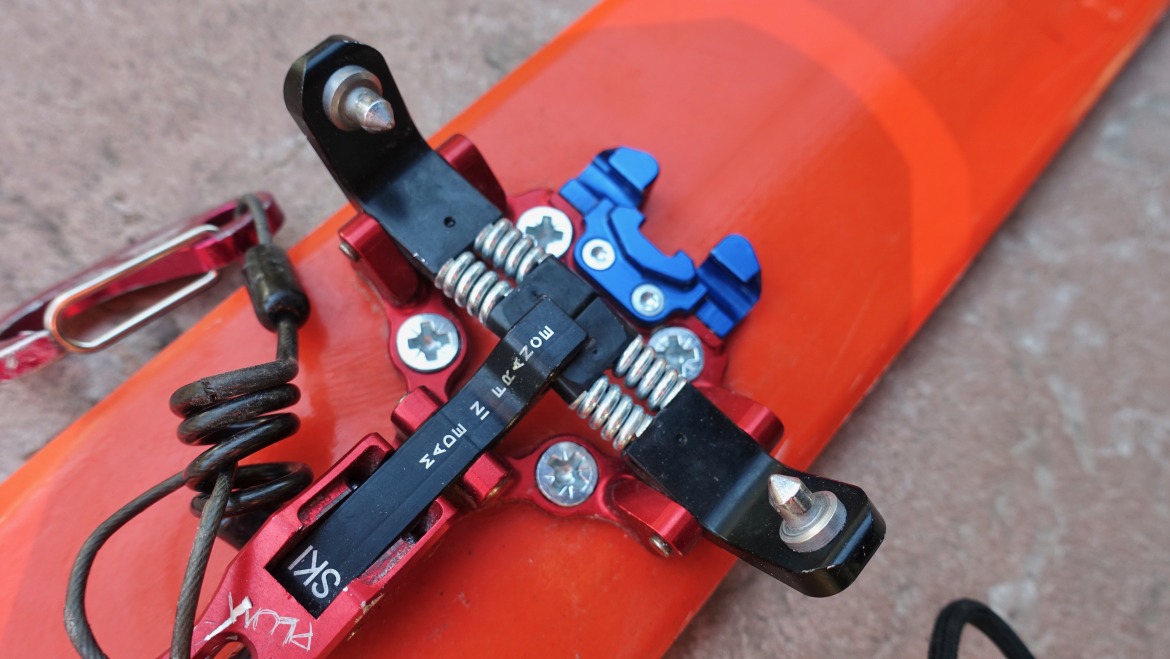
PLUM’s R170 toe piece is machined for lightness and has proven reliable and durable during a spring and early summer of PNW beat down.
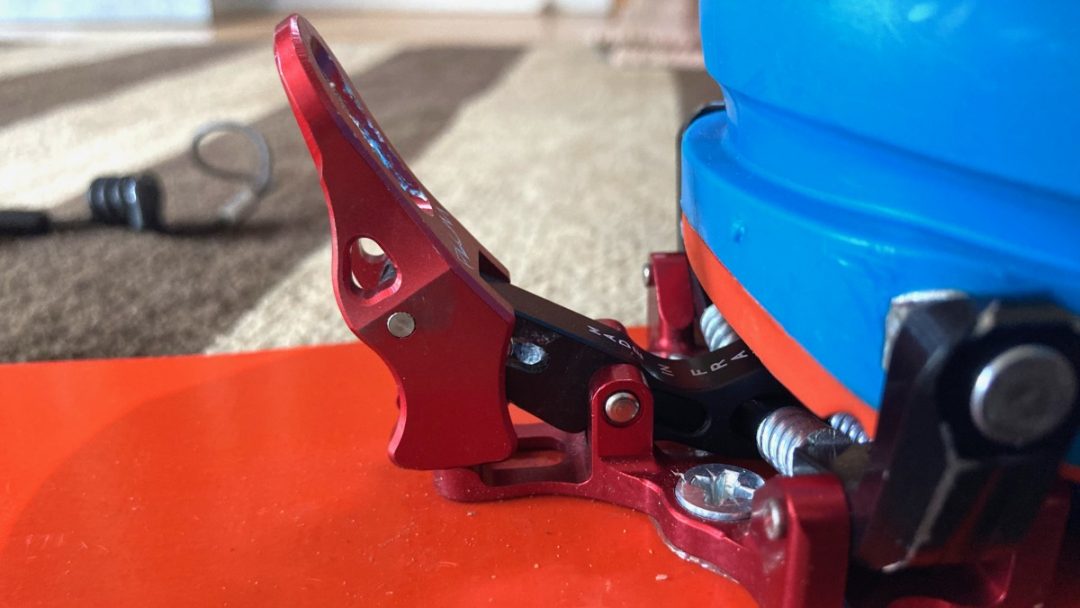
The toe lever pulled up and locked out for skinning or spicy no fall skiing.
Here comes some repeating from the first look. The R170 has a 25mm long adjustment plate on the heel, thus the increased ramp angle over the R150, where the heel unit rests flat on the ski. Over the years, as I’ve either experimented with boots or worn boots out, I decidedly love some fore and aft adjustability. In the case of the R170, the plate provides +/- 10mm of movement. It leaves the user some options to swap boots out and still allows the proper heel gap to be maintained.
Know before you buy is key here. As with most things, when cutting weight, as the R170 does, the feature set is reduced. The vertical and lateral releases are not adjustable on the R170; it’s fixed at what PLUM calls an 8. I usually ski 8-9 in my settings, so this hits the sweet spot for me. (I’m 160 pounds, 5’10”, and normally wear a size 27/27.5 boot.) PLUM does not sell a U-spring with higher or lower values. While skiing and pounding on the binding, I’ve had no pre-releases. And when the toe lever is locked out for skinning, I’ve also had no issues with popping out. Solid is a word that comes to mind despite this being such a light unit.
R170 Deal Breaker or Not?
Heel riser options seem to be very personal. Some want more, some less. Either way, figure out your personal preference, so you have nothing to fret about on the skintrack. Too, the fretting is likely minimized as well because if you choose something like the R170, then you probably have a modern ski boot with ample range of motion.
OK, the R170 is a race-style heel. You can flip the single +41mm riser over the front-facing pins, skin away, top out, transition, flip the riser back, and click in for the descent. No ski removal is required. But for some, +41mm for a riser is not enough. PLUM offers the Ozao 8 (check out our full review), which for a ~20g penalty (assume you add +10g to the R170 with crampon insert) provides lateral release adjustment in the heel and a 41mm and 50mm riser option (along with flat a flat mode). BD’s Helio 200 LT offers more riser options than the R170 with some weight addition.
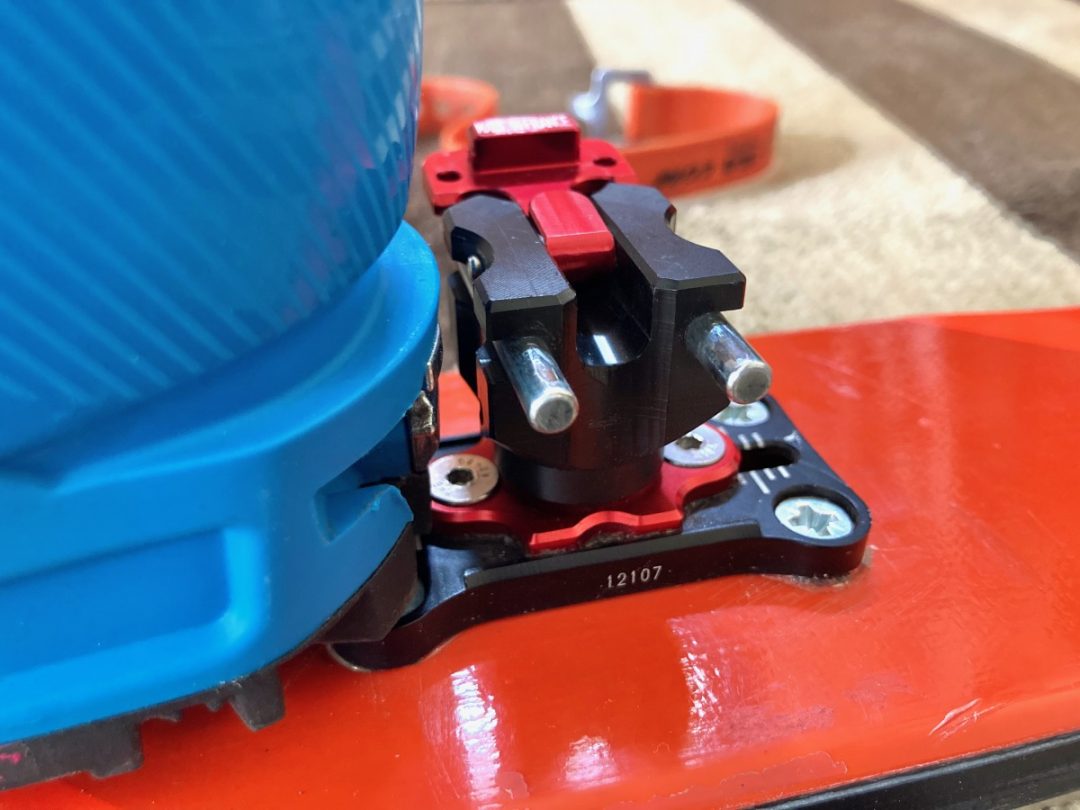
Flat mode on the R170. The heel unit must be turned 90 degrees to go from pins forward/race mode riser to flat. Not a big deal. But in flat mode, you are left with no riser option.
Here comes the “but.”
….But, with a race-style binding, you have a small price to pay when in flat mode; that’s also the case with the R170. I like flat, even with high ROM boots in the 1kg class. The R170 offers a flat mode, with a slight delta angle, due to the use of the heel mounting plate. It is, for practical purposes, flat. To engage flat mode, you rotate the binding from pins forward 90 degrees and stride away. However, in flat mode, you have no options for a riser. This lack of a riser option is not a big deal for many. Who needs flat when you are charging up a skin track? In the case of the R170, you reverse the heel twist to pins forward and flip the riser over.
Some say with high ROM boots it’s no problem in flat terrain to skin with the +41mm riser engaged. I see that point, and it is doable and not uncomfortable. So twisting the heel into flat mode may never be an issue for you. For flat mode purists, when you hit rolling terrain, you might rotate the heel piece more often than you like. Again, this is the cost for reduced weight. If you want to add grams, you can opt for bindings that offer a flat mode with riser engagement without having to rotate the heel.
Other than riser preference, the R170 is an amazing option for those looking to lighten the mass swinging from your boot and still have a reliable binding connecting you to the ski. For powder hounds looking at the R170 and wanting a brake, that’s still a no-go. (They do offer a break, but for skinny skis in the 65mm-70mm underfoot range.) And it would defeat the purpose anyhow: it adds weight. If you don’t use brakes and want a leash, I can see some planting these on wide skis for additional weight savings. The R170 is a great choice for spring missions, especially for those in or visiting volcano country. Once you start uphill, you are pretty much going uphill for 5k or so, sometimes more. In that case, you’ll appreciate the lack of mass in the R170, and you won’t be turning the heel unit from flat to riser mode.
This is a great combo here; a lock-on-tight toe unit and well-tested semi-minimalist heel for a pretty much do anything binding minus the big landings and the big cliffs geared before the big landing.
Jason Albert comes to WildSnow from Bend, Oregon. After growing up on the East Coast, he migrated from Montana to Colorado and settled in Oregon. Simple pleasures are quiet and long days touring. His gray hair might stem from his first Grand Traverse in 2000 when rented leather boots and 210cm skis were not the speed weapons he had hoped for. Jason survived the transition from free-heel kool-aid drinker to faster and lighter (think AT), and safer, are better.
